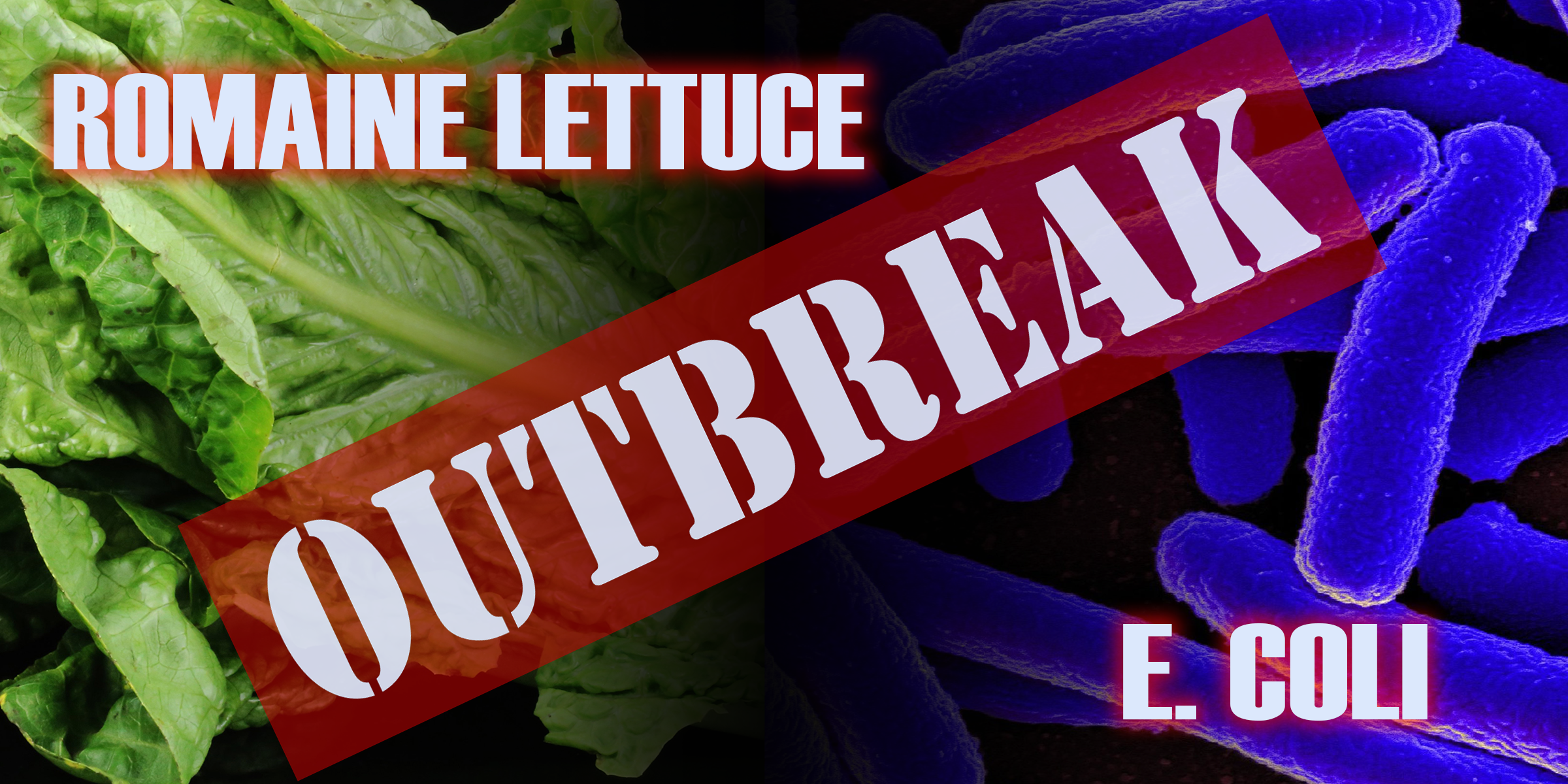
There has been much in the news lately about the nationwide recall on romaine lettuce because of E. coli contamination. To date there have been 43 cases of E. coli caused by contaminated romaine lettuce in 12 states, including Maryland. Sixteen people have been hospitalized. Consumers, restaurants, and retailers are advised to throw out and do not eat/serve/sell any romaine lettuce harvested from the Central Coastal growing regions of northern and central California, including salad mixes which may contain romaine lettuce.
If the romaine lettuce is not labeled with a harvest growing region or if you are not sure where it came from, do not buy, serve, sell, or eat it.
Wash and sanitize drawers or shelves in refrigerators where romaine was stored. Empty your refrigerator and wash all removable parts. Clean and sanitize the inside with warm, soapy water. Afterward, wipe with a solution of 1 tablespoon of bleach to 1 gallon of water. Wipe food and drink containers with warm, soapy water before returning to the clean refrigerator. Finally, don’t forget to wash your hands.
Several major romaine lettuce distributors have voluntarily agreed to immediately begin labeling their products with a harvest location by region. However, it may take some time before these labels are available.
Romaine Lettuce E. coli Outbreak: Advice for Clinicians
According to the CDC, antibiotics are not recommended for patients with E. coli infections or those suspected of possible infection unless ruled out by diagnostic testing. Some studies have shown that administering antibiotics to patients with E. coli infections might increase the risk of kidney failure, which can result from Shiga toxin-producing E. coli. Report suspected cases to the local health department, and order stool cultures for any patient presenting with bloody diarrhea.
Symptoms of E. Coli Infection
Symptoms of Shiga toxin-producing E. coli (STEC) infections vary from person to person, but often include severe stomach cramps and bloody diarrhea. If there is fever, it is usually not very high (less than 101 degrees Fahrenheit). Most people with STEC infections will begin feeling ill 3 – 4 days after eating or drinking something containing the bacteria, but illness can start anywhere from 1 – 10 days after exposure. Contact your healthcare provider if you have diarrhea that lasts for more than 3 days or is accompanied by fever, blood in the stool, or excessive vomiting. Write down what you ate/drank in the week before your illness started, and report your illness to the local health department.
Most people get better in 5 – 7 days. However, 5 – 10% of those infected with the toxin-producing E. coli develop potentially life-threatening hemolytic uremic syndrome (HUS), a type of kidney failure. While persons of any age can be infected with E. coli, those at highest risk for serious complications are children under the age of 5, adults over age 65, and those with weakened immune systems.
For more information:
https://www.fda.gov/Food/RecallsOutbreaksEmergencies/Outbreaks/ucm626330.htm
https://www.cdc.gov/ecoli/2018/o157h7-11-18/index.html

